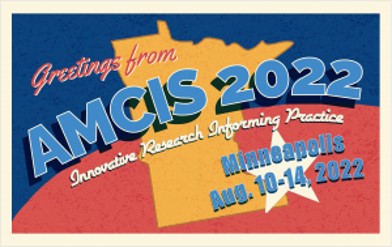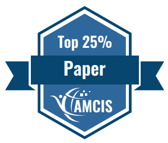SIG DSA - Data Science and Analytics for Decision Support
Loading...
Paper Type
Complete
Paper Number
1198
Description
Realising the benefits of utilising AI to support decision making whilst having the required skills with no available technology platforms, forms part of what is referred to as the knowledge attitude practice gap (KAPgap). This paper focus on the technical aspects of the KAPgap and targets answering the following research question: What are the enabling factors to support the technical aspects of organisational AI adoption? A practice based research approach was followed, drawing on an exploratory case study, this study identifies and describes enabling factors to support the technical aspects of organisational AI adoption. The surveys were structured around the characteristics of innovation as postulated in the diffusion of innovation theory. Topic modelling and the subjective analysis of the text corpus were applied to organise the response into 14 technical enabling factors. The identified enabling factors can be used by managers to support their organisational AI adoption interventions.
Recommended Citation
Smit, Danie; Eybers, Sunet; and de Waal, Alta, "A data analytics organisation’s perspective on the technical enabling factors for organisational AI adoption" (2022). AMCIS 2022 Proceedings. 11.
https://aisel.aisnet.org/amcis2022/sig_dsa/sig_dsa/11
A data analytics organisation’s perspective on the technical enabling factors for organisational AI adoption
Realising the benefits of utilising AI to support decision making whilst having the required skills with no available technology platforms, forms part of what is referred to as the knowledge attitude practice gap (KAPgap). This paper focus on the technical aspects of the KAPgap and targets answering the following research question: What are the enabling factors to support the technical aspects of organisational AI adoption? A practice based research approach was followed, drawing on an exploratory case study, this study identifies and describes enabling factors to support the technical aspects of organisational AI adoption. The surveys were structured around the characteristics of innovation as postulated in the diffusion of innovation theory. Topic modelling and the subjective analysis of the text corpus were applied to organise the response into 14 technical enabling factors. The identified enabling factors can be used by managers to support their organisational AI adoption interventions.
When commenting on articles, please be friendly, welcoming, respectful and abide by the AIS eLibrary Discussion Thread Code of Conduct posted here.




Comments
SIG DSA